Top 10 Wyoming National Parks and State Parks In The U.S.
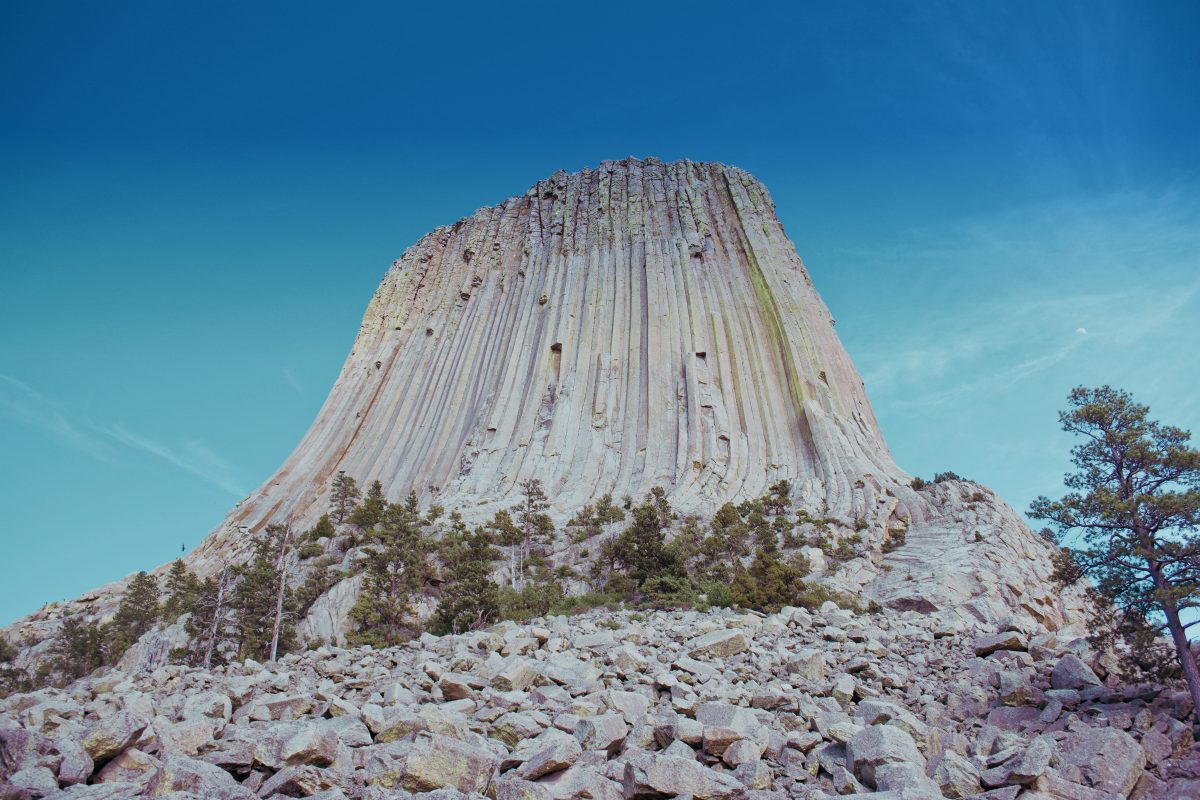
For a taste of the great American outdoors, you could do a lot worse than plan a jaunt to the Cowboy State. Yep, Wyoming national parks are up there with some of the most iconic in the country. And even without the big hitters, there are smaller, more off-the-beaten-track Wyoming state parks that offer untrodden lakes and hills and frontier-era history.
What are you waiting for?
To help plan that amazing jaunt through this gateway to the Wild West, this list has info on some of the top national parks in Wyoming, along with some lesser-known state gems.
Of course, it ranges across the craggy summits of the Grand Teton National Park and wonders at the majestic geysers of the Yellowstone National Park. But there’s also room for canyons peppered with prehistoric fossils, and reservoirs with boating waters and beaches.
1.
Yellowstone National Park
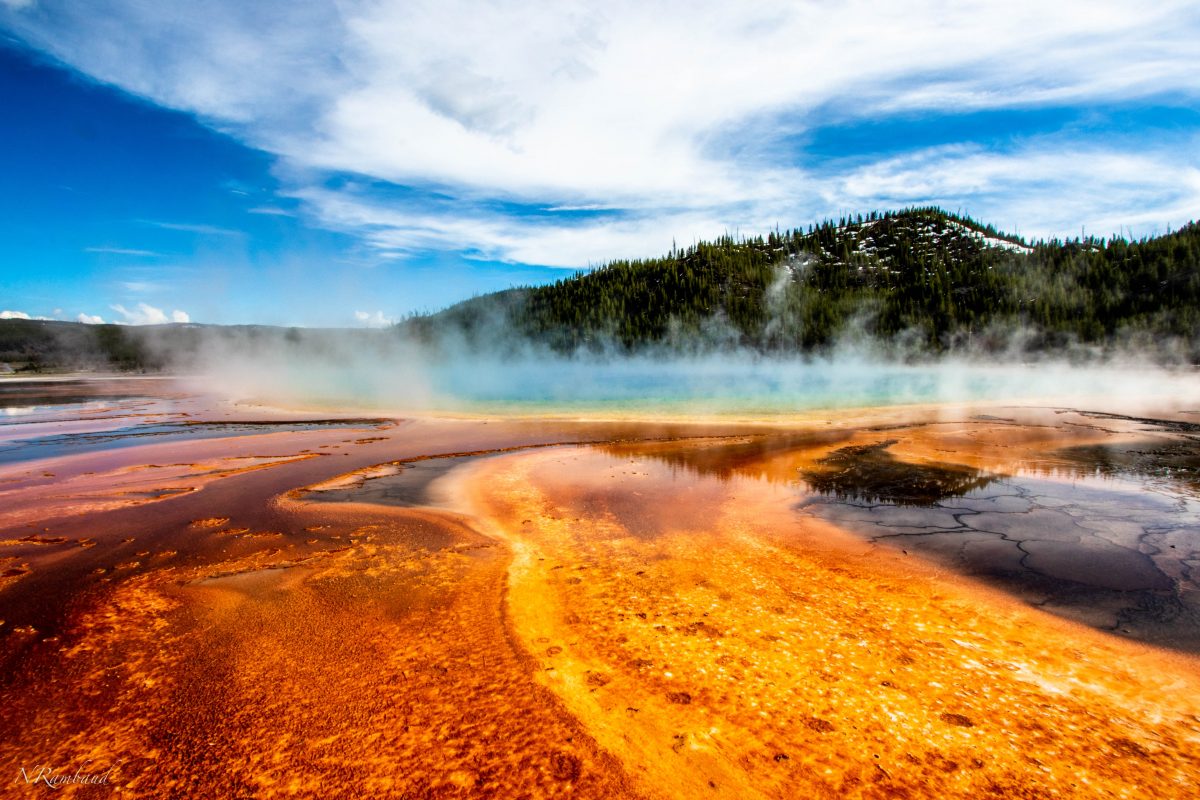
©Photo by Nicolasintravel on Unsplash
The most breathtaking, awe-inspiring, and downright bucket list-busting of the Wyoming national parks is surely Yellowstone. This majestic land of crashing cataracts, quaking aspen forests, stone peaks, and rolling meadows covers a whopping 2.2 million acres in all. It was protected in law by Ulysses S. Grant way back in 1872, which makes it the oldest of all the national parks in Wyoming and the United States as a whole.
These days, people flock in to wonder at the sheer size and the unique range of sights that lurk within the boundaries of the Yellowstone National Park. You’d need days, weeks, or even months to even scratch the surface. However, must-sees usually include the roaring Yellowstone Falls, which crash into a deep canyon.
There’s the multi-colored Grand Prismatic Spring, steaming and simmering amid a sea of spruces. And – of course – there’s colossal Old Faithful, which spurts broiling water more than 100 feet into the sky.
You can access the Yellowstone National Park from Montana in the north or Idaho in the west. But there are also several routes in from the Cowboy State. They are the East Entrance on route 20, and the South Entrance on Route 89. Both are perfect if you’re eager to see the reflective waters of massive Yellowstone Lake – one of the largest freshwater lakes in the US, and a spectacular centerpiece of the park itself.
2.
Grand Teton National Park
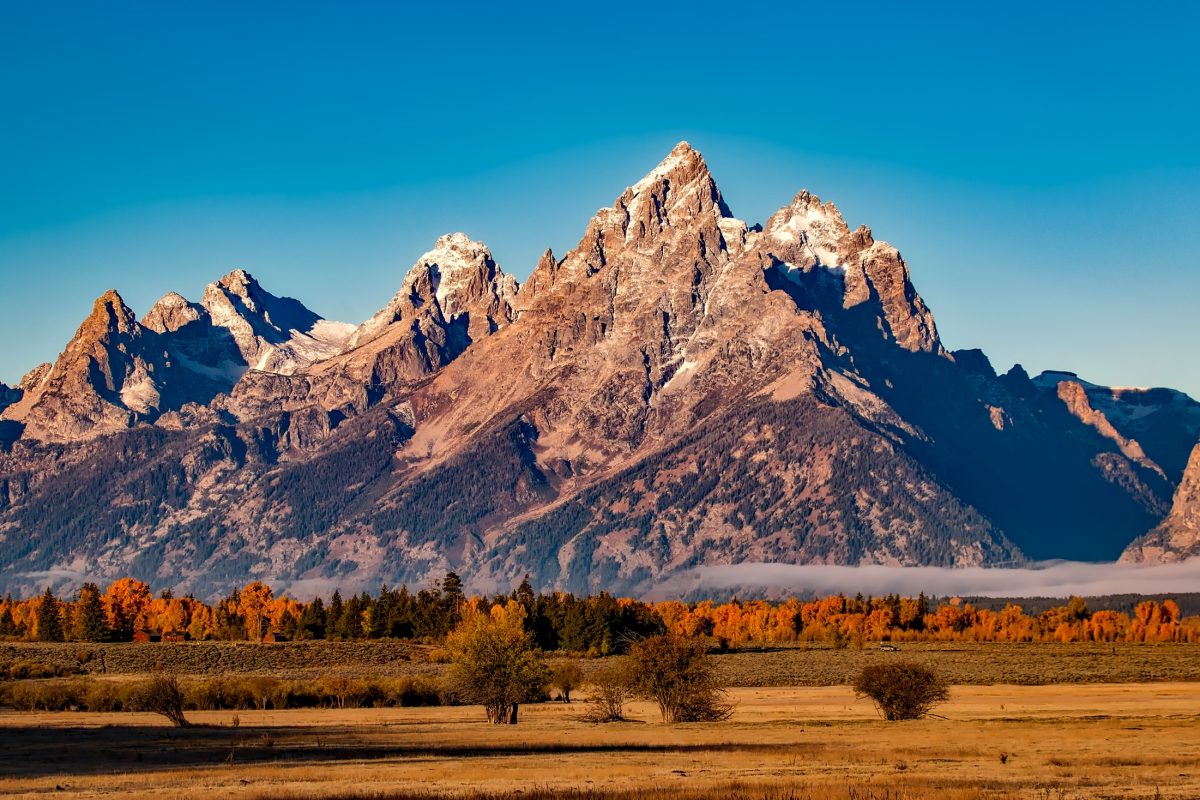
©Photo by David Mark from Pixabay
It’s impossible to overstate the sheer drama of the mountains in the Grand Teton National Park. They twist like gnarled fingers overhead. Some are dashed with snowdrifts even during the warmest months of the summer. Others crash through the clouds and come ringed by sharp slopes of scree and ancient schist rocks.
Yep, you’ll be gasping and gawping at every turn in the hiking trail in this most stunning of Wyoming national parks. Talking of hiking, most of the walking takes place from the springtime onwards. That’s when the snowmelt opens up the trails. Choices for hoofing it include the Teton Crest Trail through idyllic Phillips Pass and high-alpine plateaus. And there’s the 10.5-mile Death Canyon Trail, which weaves into a narrow cleft under Prospectors Mountain, filled with pines and stone crevasses.
Of all the national parks in Wyoming, the Grand Teton National Park is perhaps the most accomplished when it comes to winter sports. Benefitting from huge dumps of powder between December and March, it’s host to famous Jackson Hole. That’s linked to nearby Jackson Hole Mountain Resort, which is a world-class place to head for ski runs, touting 2,500 acres of marked terrain and over a kilometer of vertical descent!
3.
Bighorn Canyon National Recreation Area
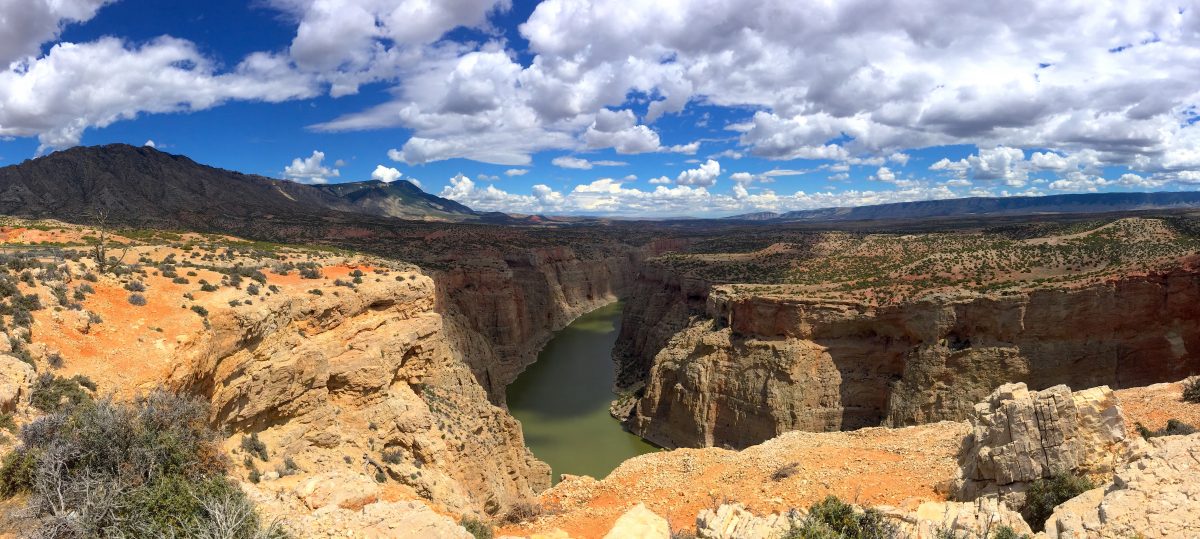
©Photo by Kjnpta on Wiki Commons
Situated to the east of the alpine meadows of Grand Teton National Park and the spurting geysers of Yellowstone National Park, the Bighorn Canyon National Recreation Area straddles the Wyoming-Montana state line. As it crosses the divide, it flaunts dramatic vistas of deep gorges and red-tinted stone. They are framed by the muscular tops of the Pryor Mountains, where feral herds of horses still roam.
This designated park was established and preserved in law back in 1966. It was created with the rising of the Yellowtail Dam on the Bighorn River. That produced the 60-mile-long body of water that is Bighorn Lake, which you’ll see spreading through the steep-sided canyon on the south side of the reserve.
Being a little more off the beaten path compared to other national parks in Wyoming, the Bighorn Canyon is a top place to go for seclusion. There are plenty of adventurers and high-adrenaline pursuits to keep you going, too. They include wild camping, long-distance tramping trails, rock climbing, and (in the winter) ice fishing.
4.
Flaming Gorge National Recreation Area
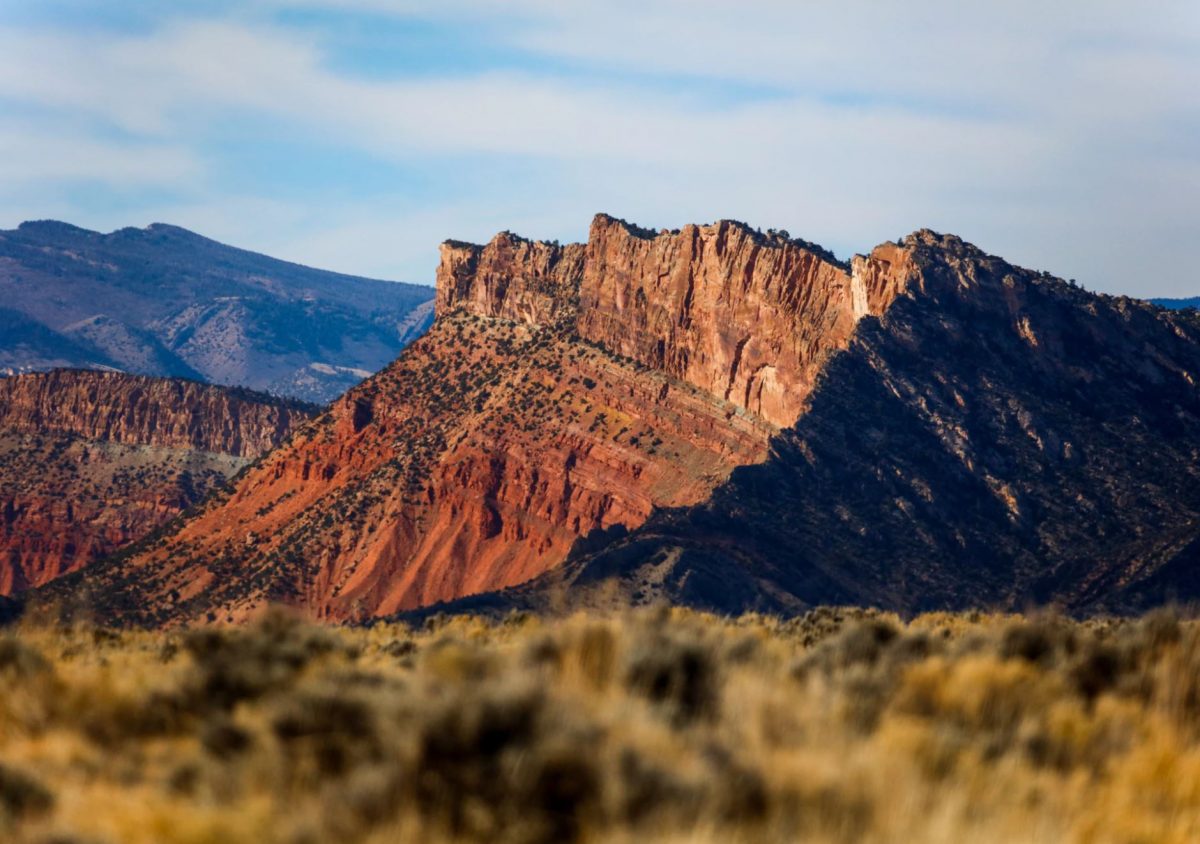
©Photo by Patrick Hendry on Unsplash
Deep in the hot and dusty southern end of Wyoming, the Flaming Gorge National Recreation Area spills across the state line into the deserts of Utah. It’s named for the ochre sandstone that forms the base of the main gorge. That shines like rust between ridges caked in the mud the grey-blue waters of the Flaming Gorge Reservoir below.
The actual reserve here comes under the auspices of the Ashley National Forest. That’s Utah based, but the Flaming Gorge has some of its most spectacular sections up in the Cowboy State. It’s there that you’ll find the Buckboard Crossing Campground tucked onto the side of the Green River. And it’s there that you can launch kayaking and canoe expeditions into the narrowest crevices of the gorge.
Most visitors flock here when the Wyoming weather is at its best in the midsummer. They come to hike high-perched trails on the edge of the Flaming Gorge and go boating under cloudless skies. However, winter means you can settle in cozy backcountry lodges with gorgeous views. Fall, meanwhile, has color-changing woods and empty trekking paths.
5.
Fossil Butte National Monument
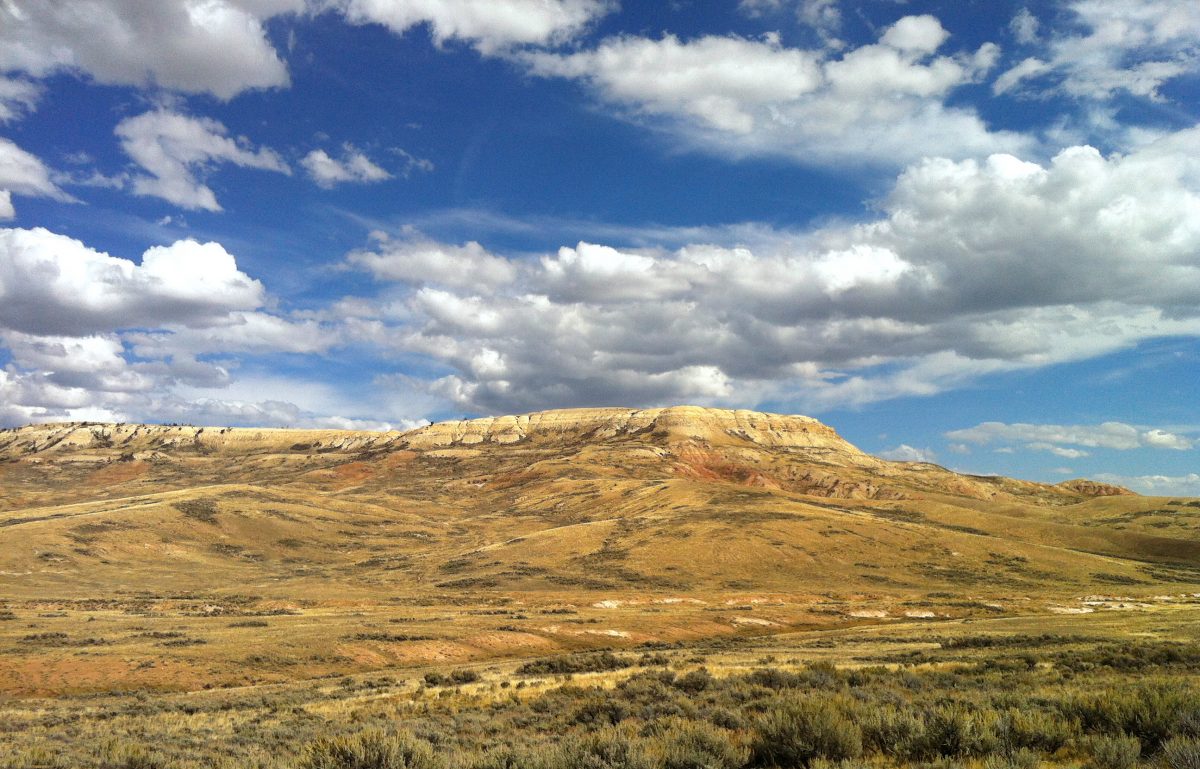
©Photo by Leaflet on Wiki commons
The Fossil Butte National Monument is one of the outdoorsy gems of southern Wyoming. Clutching the frontier lands that roll westwards into Utah, it’s mainly famed for its rich soil deposits. They date all the way back to the Eocene Epoch – that’s a whopping 56 million years ago. Accordingly, you can come here on the hunt for prehistoric petrified remains of all sorts of ancient creatures…
The nearby American Fossil Quarry and Ulrich’s Fossil Gallery showcase a whole medley of the animals that have been encased in rock over the eons. They include big-finned fish, sardines, and even whole tapirs, all of which once roamed the lands of modern-day Wyoming.
But it’s not just fossil digging that’s on the menu at this Wyoming national park. There are also backcountry adventures. Pull-on the hiking boots and a web of trails await. They include the 1.5-mile Nature Trail that lifts up above specks of green in the desert. And there’s the Historic Quarry Trail, which moves between old dig sites that have yielded famous fossils.
6.
Buffalo Bill State Park
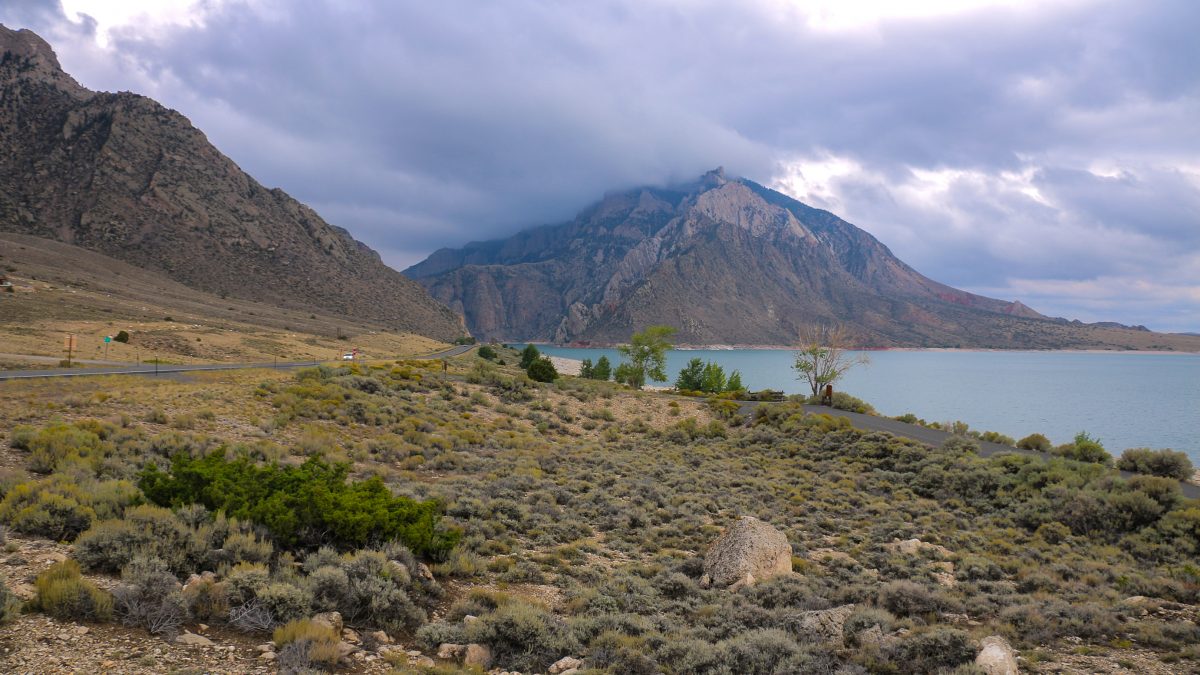
©Photo by Martin Kraft on Wiki Commons
Named for the infamous frontier circus showman William Frederick “Buffalo Bill” Cody, this enthralling state reserve is a little taster of the Old West. It sits in the shadow of the craggy Absaroka Mountains, hugging a huge reservoir on the courses of the Shoshone River.
Ever since its establishment in 1957, the site has been a haven for adventure pursuits and R&R. It fuses wild camping grounds with biking trails. There are pull-up points for RVs and roadsters for those on a cross-continental road trip. And you can wander hiking paths like the Eagle Point Trail through scrublands.
Most of the enjoyments are focused on the reservoir itself, however. Boating, kayaking, fly fishing and more are on the menu for those who take to the water. And on rainy days when the Wyoming weather doesn’t go your way? Think about hitting the Buffalo Bill Dam Visitor Center. It has exhibits that chronicle the construction of what was once one of the highest concrete dams in the world.
7.
Devils Tower National Monument
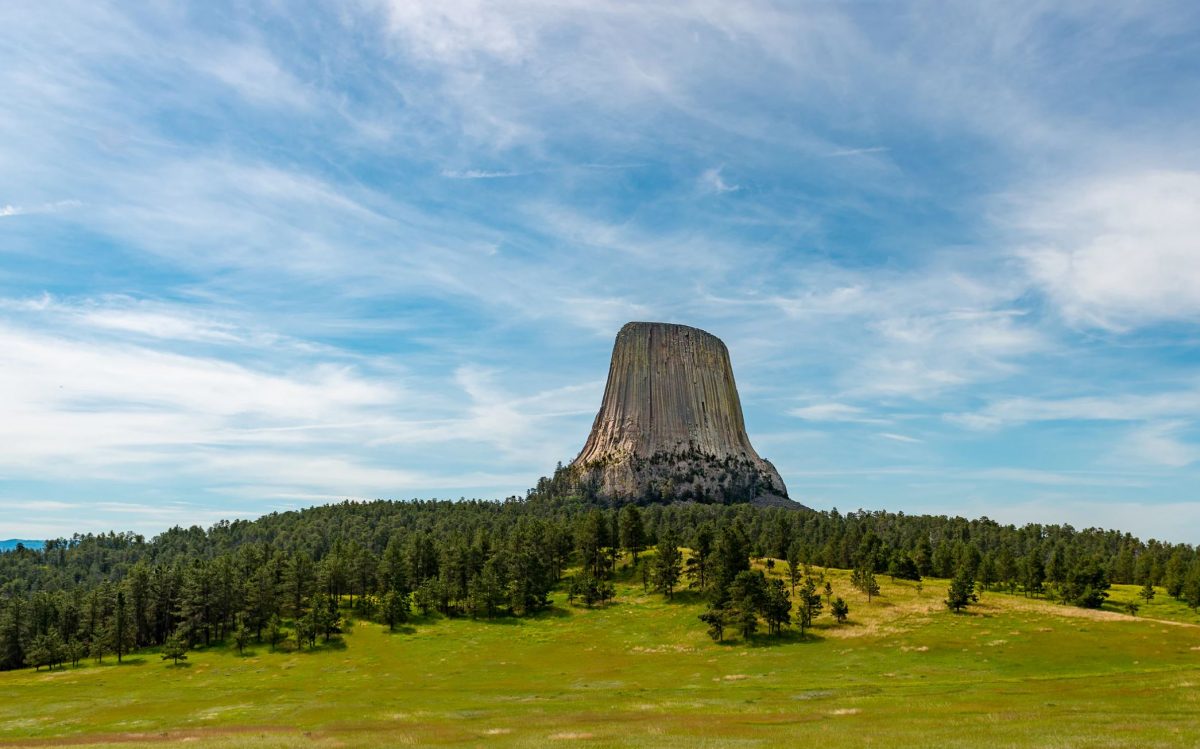
©Photo by Stephen Walker on Unsplash
Prepare to gasp the moment you first set eyes on the Devils Tower. Whittled and chiseled, it’s a sinewy turret of stone that’s really not like anything else in America. In all, it clocks up a soaring height of over 1,260 feet, as the Belle Fourche River wriggles and winds through Wyoming’s green backcountry and old ranchlands below.
Most visitors to the Devils Tower National Monument are spurred on to learn more about the unique geological forces that created the spire. For that, there’s an on-site visitor center. Housed in a traditional frontier cabin that was built back in the 1930s by the Civilian Conservation Corps, it contains exhibitions that help travelers understand the strange mix of siltstone and sandstone that has built up here since the Paleocene Epoch more than 60 million years ago.
The most daring arrivals to this most striking of Wyoming national parks sometimes opt to attempt a climb of the Devils Tower itself. That’s mainly done during the summer. It’s a feat reserved for only experienced and expert mountaineers. For something a little more accessible, you might want to consider trails in the surrounding region. They include the Red Beds Trail through a rocky riparian landscape, and the Joyner Ridge Trail, which has majestic lookouts across the preserve.
8.
Keyhole State Park
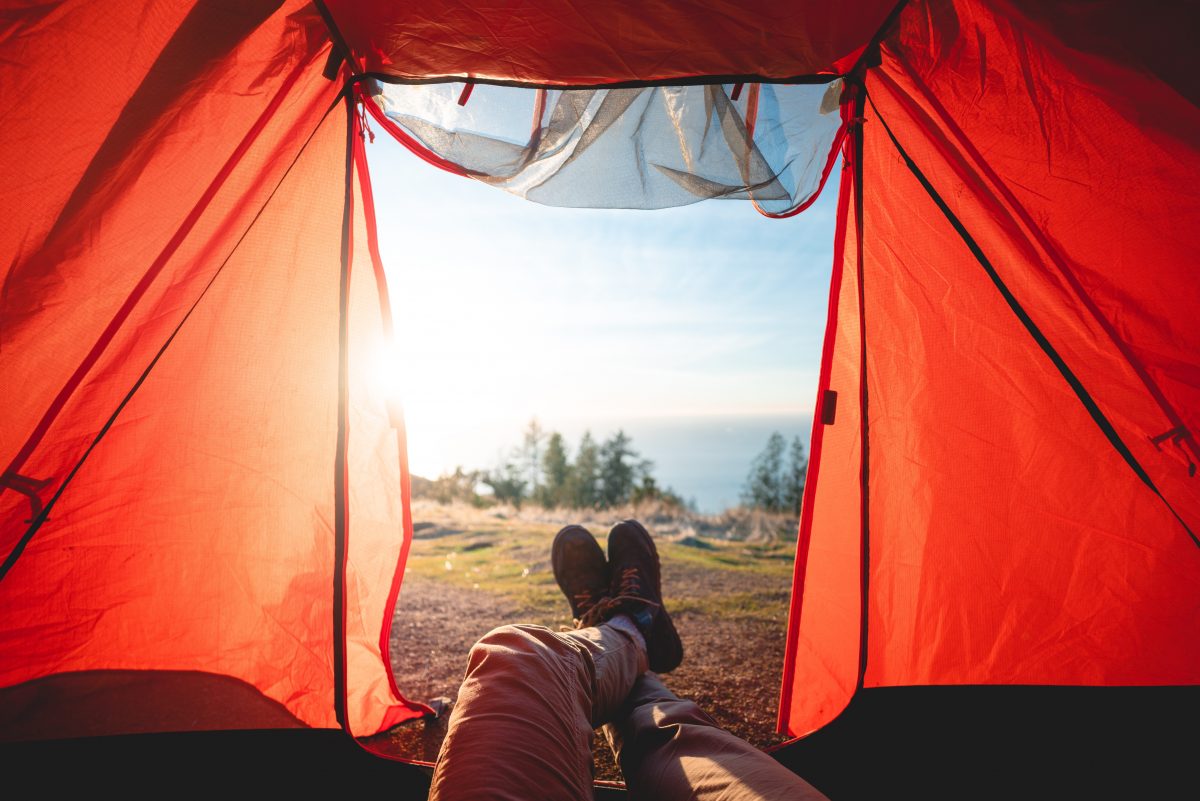
©Photo by Will Truettner on Unsplash
Straddling Route 14 and Interstate 90 as it cuts right across the heart of north-eastern Wyoming, the Keyhole State Park is a place to breath fresh country air near the highway. Peel off and park up at the dedicated lots and you’ll soon be lost in nature. The whole reserve is centered on the glistening Keyhole Reservoir. Around it, high walls of stone offer lookout points. And banks dressed in evergreen woods mean there are oodles of picnic spots with shade.
Of course, water is the main draw. A standout among Wyoming state parks for fishers of walleye and bass, and a mecca for recreational boaters, the main lake is peppered with marinas and launches. There’s also a small sand beach on the side of the reservoir. That’s perfect when the Wyoming weather gets scorching in the midsummer months.
Other basic facilities on offer at the Keyhole State Park include BBQ pits and picnic tables. RV drivers will be pleased to discover pull-up spots for their autos. Winter, meanwhile, ushers in a few empty snowshoeing and Nordic ski routes for when the white stuff falls.
9.
Fort Laramie National Historic Site
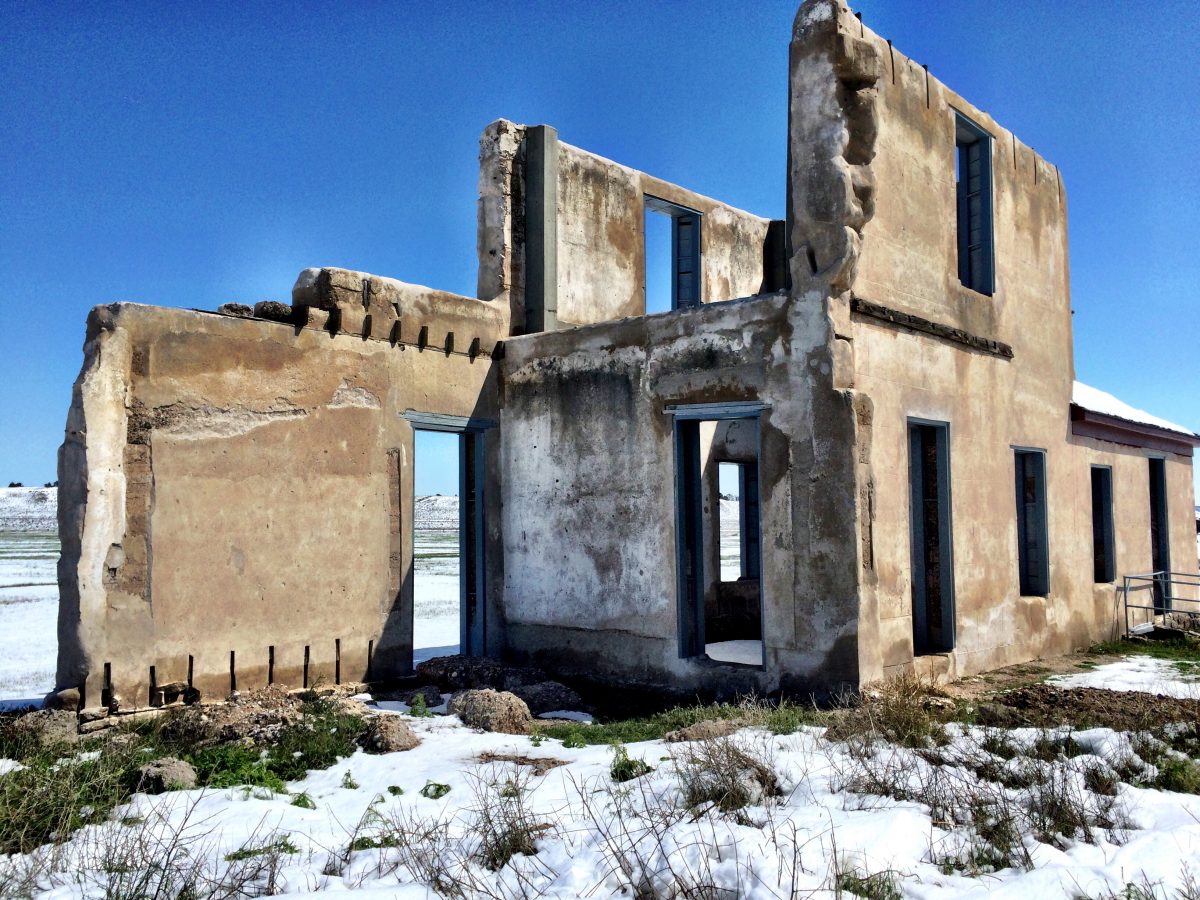
©Photo by tinyfroglet on Flickr
Get ready to be immersed in tales of frontiersmen and pioneers at the Fort Laramie National Historic Site. This truly unique speck on the map of Wyoming national parks started life in the 1830s. It was constructed as a far-flung trading post for trappers making their way into the unexplored Great Plains. Soon, its strategic position was noticed, and the military settlement of Fort Laramie was born.
In the decades that followed, the fort was a flashpoint in the Great Sioux War and the American Civil War. It held POWs and helped wagon trails heading across the Continental Divide. These days, all that is chronicled in the on-site exhibits at the visitor center. Around it, a whole historic district unfolds with original barracks and armories. Regular reenactments sometimes breathe authenticity into the place, with suited Union soldiers bearing arms on the prairies once more.
10.
Glendo State Park
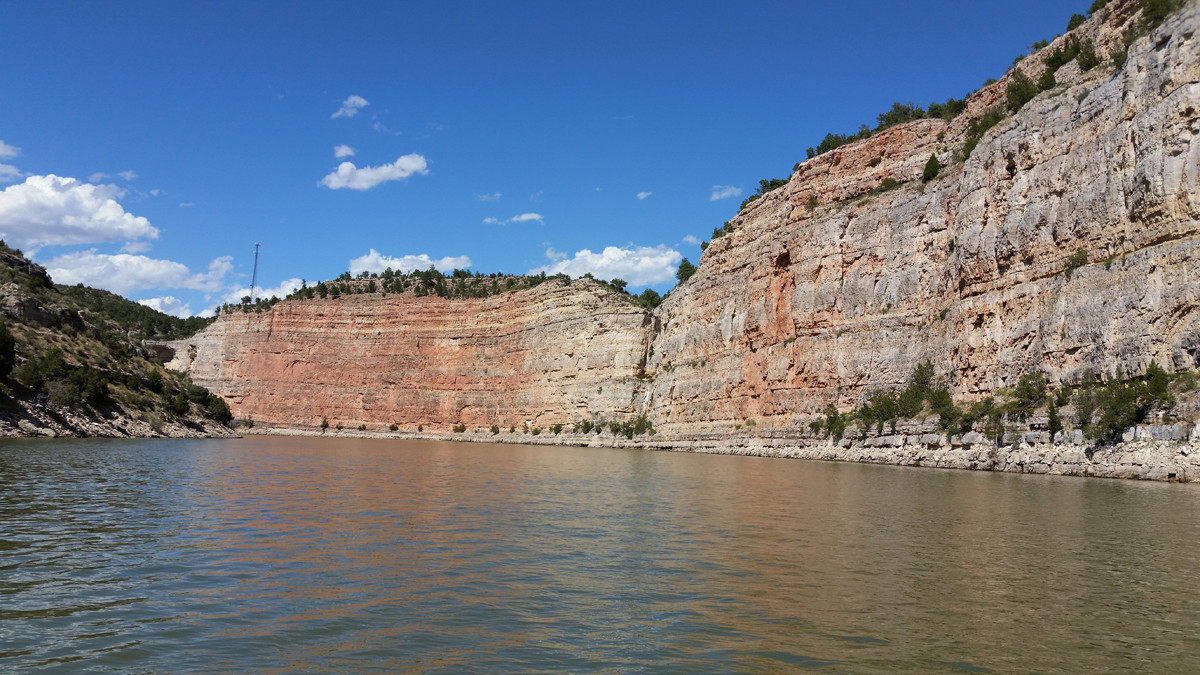
©Photo by official travelwyoming.com
Glendo is one of the best Wyoming state parks to visit for those interested in the history of the American frontier. It’s encompassed by the erstwhile territories of the Cheyenne and the Sioux. It’s also one of the few places where you can still see old tipi rings standing in the Cowboy State. What’s more, there are lots of aboriginal relics, many of which have turned up in modern archaeology digs at the site.
In addition to the history and culture, there’s a gorgeous cut out of eastern Wyoming to explore. It’s all hooked on the shimmering Glendo Reservoir. That bloats outwards on the courses of the North Platte River, offering the usual mix of boating ramps and recreational pebble beaches.
If you can’t bag yourself a coveted spot camping in Wyoming national parks, then this could be the next best thing. That’s because Glendo State Park comes with over 500 individual pitches for tents across 21 different sites. You’ll never be short of somewhere to sleep under canvas! Learn more about the hiking tracks and places to camp here at Glendo State Park.
Need more ideas to explore national parks in the U.S.? Check out our latest national park guides here, make sure you mark some of them down on your bucket list too.

